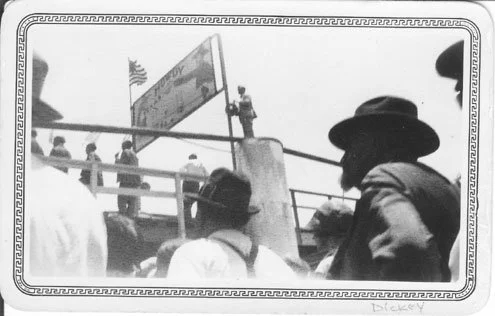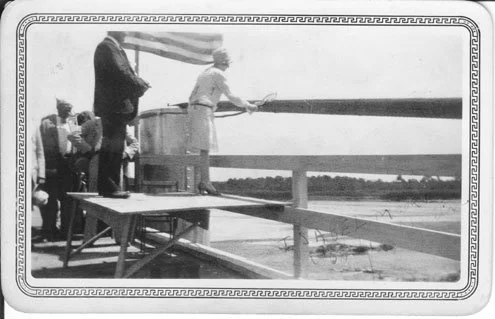A History of Red River Bridges (continued)
By Tim Davis. From the North Texas eNews, October 15, 2017
July and August marked the ninetieth anniversary of the opening of the suspension bridges that once linked Fannin County to Oklahoma. Couple this with the fact that the good folks at the Fannin County Historical Museum recently found some photos of the opening/dedication of the Sowell’s Bluff Bridge, and you have good reasons to briefly revisit the history of both structures.
On March 4, 1920 a group of Fannin County citizens met at the Gem Café on the square in Bonham to discuss the need for a bridge or bridges linking Fannin County to Bryan County, Oklahoma. They felt that the bridges were needed for agricultural/business reasons and for tourism.
The wheels turned slowly, but the Bonham Daily Favorite (BDF) of June 4, 1926 noted that the Fannin County Commissioner’s Court “gave a permit…to contract and maintain two bridges in this county across Red River.”
The article further stated that the contract for both bridges went to the Austin Bridge Company of Dallas. Both structures would be one-lane toll bridges.
By July 1927 the Sowell’s Bluff suspension bridge was opened. The Dallas Morning News (DMN) of July 6 noted that the formal opening was a grand affair complete with the breaking of “a bottle of Red River water…by Miss Isabel Moor…” to christen the bridge.
Ms. Isabel Moor christens the Sowell's Bluff suspension bridge with a bottle of Red River water. photo courtesy of Fannin County Museum of History
In addition, free barbecue was served and music provided “throughout the day by the Bonham Municipal Band.” Key speakers on the program were Congressman Sam Rayburn and Congressman Wilbur Wright of Cartwright, Oklahoma.
A formal opening of the Telephone Suspension Bridge was held roughly one month later on August 11th. Again there was a christening with a bottle of Red River water, broken this time by a Bryan County lady named Anna Jo Lee, a picnic, and music provided by the municipal bands of Bonham and Honey Grove.
In the early 1930s the bridges, and many others like them across Texas, became the center of a heated debate over whether they should be toll or free. By late 1932 it was clear that Sowell’s Bluff would become a free bridge, while Telephone would remain a toll structure.
Unfortunately, the life span of both bridges was short. The DMN of January 31, 1934 reported that the Sowell’s Bluff Bridge had plunged into the icy waters of Red River on January 29. The collapse, according to the paper, followed “the breaking of a cable on the Texas side.” There were no vehicles or civilians on the bridge at the time. The bridge was replaced by the current bridge spanning Sowell’s Bluff, which opened to traffic in December 1938, with a formal opening in March 1939.
Though the Telephone Bridge held out quite a bit longer, it also plunged into the cold waters of Red River on December 4, 1940. The BDF headline that day read: “Anchor Pulls Out on Texas Side Stream.” While one vehicle and some civilians were on the bridge at the time it collapsed, no one was hurt.
The Telephone Bridge was never replaced, but remnants of its concrete supports are still in the river and on the bluffs. Thus ended the history of the suspension bridges that once linked Fannin County to Oklahoma.
Many thanks to Malinda Allison of the Fannin County Historical Musem for sharing the recently discovered photos of the dedication of the Sowell’s Bluff suspension bridge.



